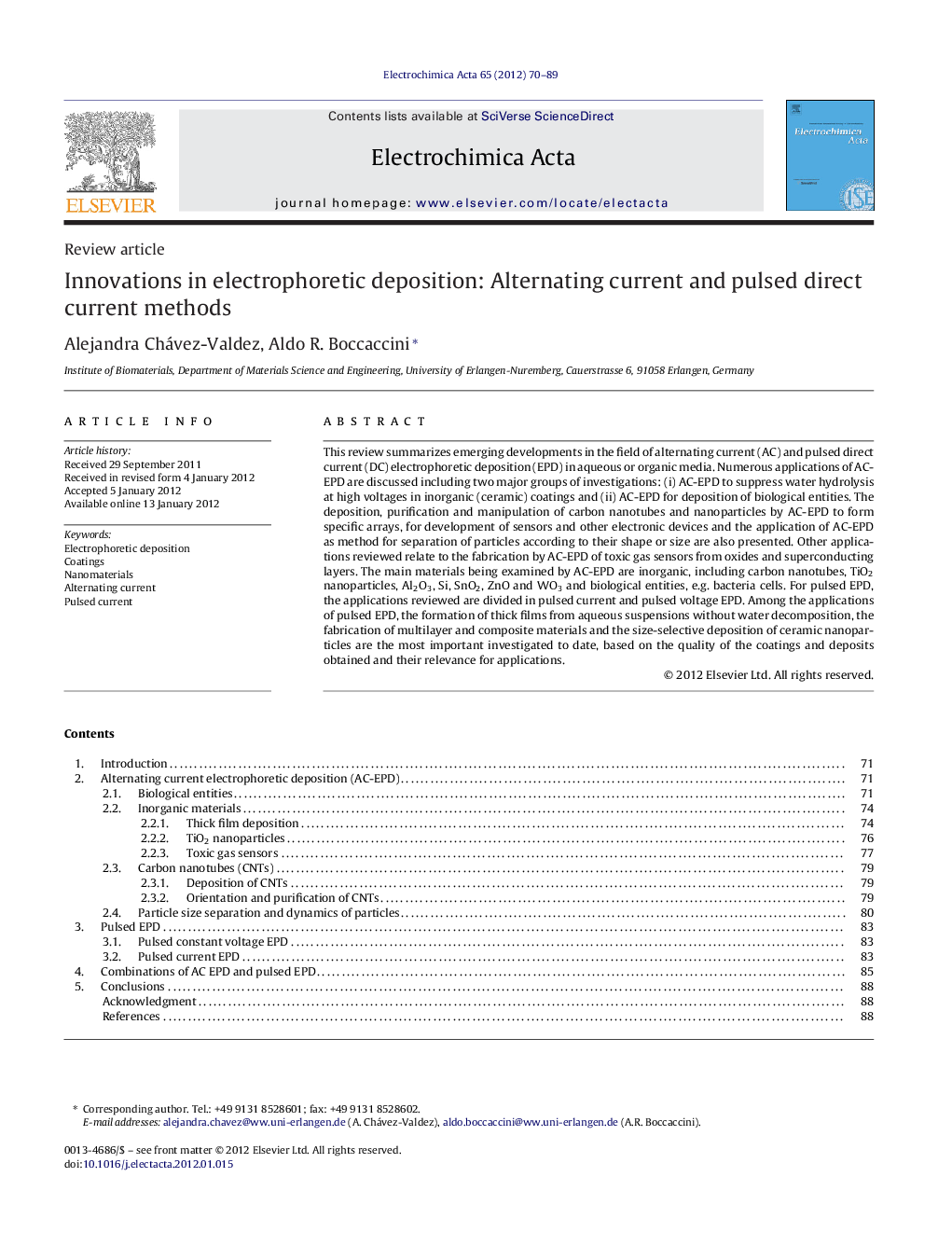| Article ID | Journal | Published Year | Pages | File Type |
|---|---|---|---|---|
| 188841 | Electrochimica Acta | 2012 | 20 Pages |
This review summarizes emerging developments in the field of alternating current (AC) and pulsed direct current (DC) electrophoretic deposition (EPD) in aqueous or organic media. Numerous applications of AC-EPD are discussed including two major groups of investigations: (i) AC-EPD to suppress water hydrolysis at high voltages in inorganic (ceramic) coatings and (ii) AC-EPD for deposition of biological entities. The deposition, purification and manipulation of carbon nanotubes and nanoparticles by AC-EPD to form specific arrays, for development of sensors and other electronic devices and the application of AC-EPD as method for separation of particles according to their shape or size are also presented. Other applications reviewed relate to the fabrication by AC-EPD of toxic gas sensors from oxides and superconducting layers. The main materials being examined by AC-EPD are inorganic, including carbon nanotubes, TiO2 nanoparticles, Al2O3, Si, SnO2, ZnO and WO3 and biological entities, e.g. bacteria cells. For pulsed EPD, the applications reviewed are divided in pulsed current and pulsed voltage EPD. Among the applications of pulsed EPD, the formation of thick films from aqueous suspensions without water decomposition, the fabrication of multilayer and composite materials and the size-selective deposition of ceramic nanoparticles are the most important investigated to date, based on the quality of the coatings and deposits obtained and their relevance for applications.
